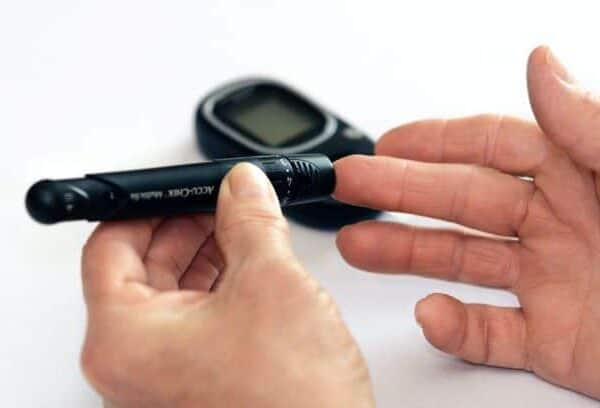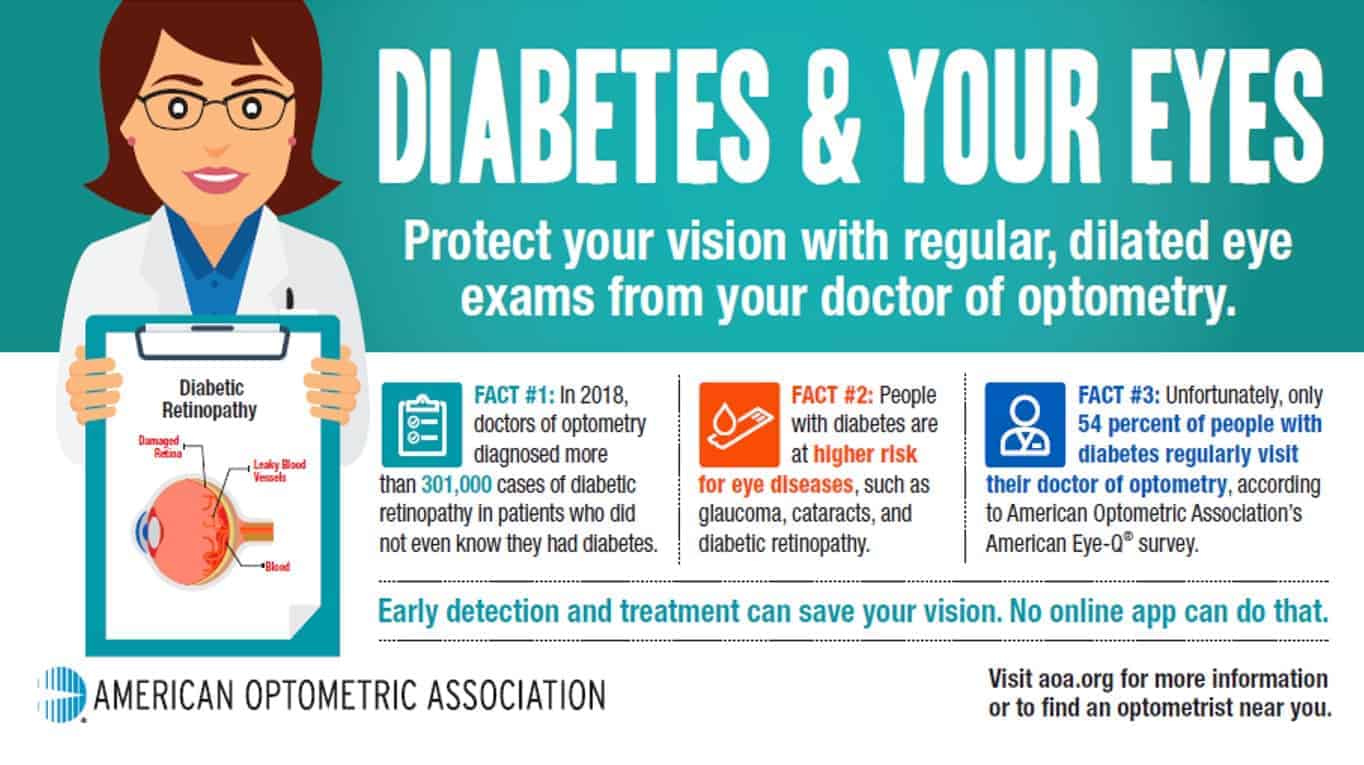
Diabetes Awareness Month 2020
November 13, 2020

National Diabetes Awareness Month is acknowledged every November with November 14th as World Diabetes Day. As one of the leading causes of blindness in the United States, it is important that people understand the details of diabetes.

What is the difference between Type 1 and Type 2 diabetes?
The simplified definition of diabetes is elevated blood glucose (or sugar in the blood). The body uses sugar to keep the organs functioning properly. Insulin is produced by the pancreas to help extract sugars from food for conversion to cellular energy. If insulin is not present to convert the sugar to energy, the sugar continues flowing through the blood vessels, which causes vascular damage.
Type 1 diabetes is typically diagnosed in children and young adults. It occurs when the body does not produce insulin, so sugar builds up in the blood stream. This type of diabetes is not nearly as common as Type 2, however, it can cause extensive harm due to the chronic nature of the disease. Treatment with supplemental insulin helps manage the condition, but it is a lifelong commitment to keep the blood sugar in check.
Type 2 diabetes is the most common form of diabetes, which occurs when the body produces insulin, but does not utilize it properly. When oral medications are not enough to correct the insulin resistance, the body can greatly decrease the amount of insulin that is produced, which then requires the addition of supplemental insulin. It is possible to eliminate the need for medication and insulin through lifestyle changes. Some people think that Type 2 diabetes is only present in overweight people from eating too much sugar, however, this is not true. Type 2 diabetes can be inherited even in seemingly healthy individuals.
What is prediabetes?
Individuals with prediabetes have elevated blood sugar, but not high enough to be considered Type 2 diabetes. According to the CDC, more than 1 in 3 people have prediabetes. Without modifications to diet and exercise, it is likely that Type 2 diabetes will develop. People with prediabetes can go years without any symptoms, but still have higher than normal blood sugar for an extended amount of time. This is why it is important to have routine physicals and bloodwork for identifying underlying conditions.
What is “A1C” and how is it different from fasting blood sugar?
Hemoglobin A1C is an average blood sugar level over a 90-day period. It measures the percent of blood sugar attached to the hemoglobin molecule on red blood cells. Each red blood cell lives for approximately 90 days, which is how the A1C test is able to average the blood sugar over that amount of time. A primary care physician can use this information to determine if an individual is at risk for developing diabetes. Depending on the type and severity of diabetes, A1C can be tested one to four times per year. According to the American Diabetes Association, an A1C between 5.7% and 6.4% is considered prediabetes. An A1C over 6.5% is considered diabetes, however, most physicians aim to keep the A1C under 7% in diabetic patients.
Fasting blood sugar is measured when the blood is tested after fasting or not eating for at least 8 hours. It provides instant information of the current blood sugar levels, which should be baseline data prior to the addition of glucose into the body from food. Without extra sugar in the bloodstream from food, the body should be able to maintain a steady blood sugar without high spikes. The American Diabetes Association considers fasting blood sugar between 100 and 125 mg/dL as prediabetes, whereas fasting blood sugar above 125 mg/dL is diabetes.
How does diabetes affect the eyes?
Diabetes can be detected during a dilated eye exam in people who don’t know they have diabetes. Some people do not have visual symptoms until they reach a severe level, which allows damage to occur quietly unnoticed.
Both Type 1 and Type 2 diabetes can cause diabetic retinopathy and macular edema. Diabetic retinopathy is bleeding in the retina (light-sensitive tissue that lines the back of the eye). Excess sugar in the blood damages the walls of small blood vessels throughout the body. Some of the smallest blood vessels are located in the retina. The damaged blood vessels become weak and can leak blood into the retina. If parts of the retina do not receive the necessary amount of blood and nutrients to function, new blood vessels grow on the top layer of the retina. These blood vessels are abnormal and always cause more harm than good.
Macular edema is swelling of the macula (part of retina responsible for central vision), which can lead to vision loss. Diabetes can cause or worsen other conditions, such as cataracts and glaucoma. Some individuals also experience fluctuations in vision based on prolonged spikes and dips in blood sugar.
It is very important for people with diabetes to have an annual dilated eye exam. Permanent damage to the eyes can be prevented if diagnosed and treated early. If you are due for an exam, call our office or schedule online!